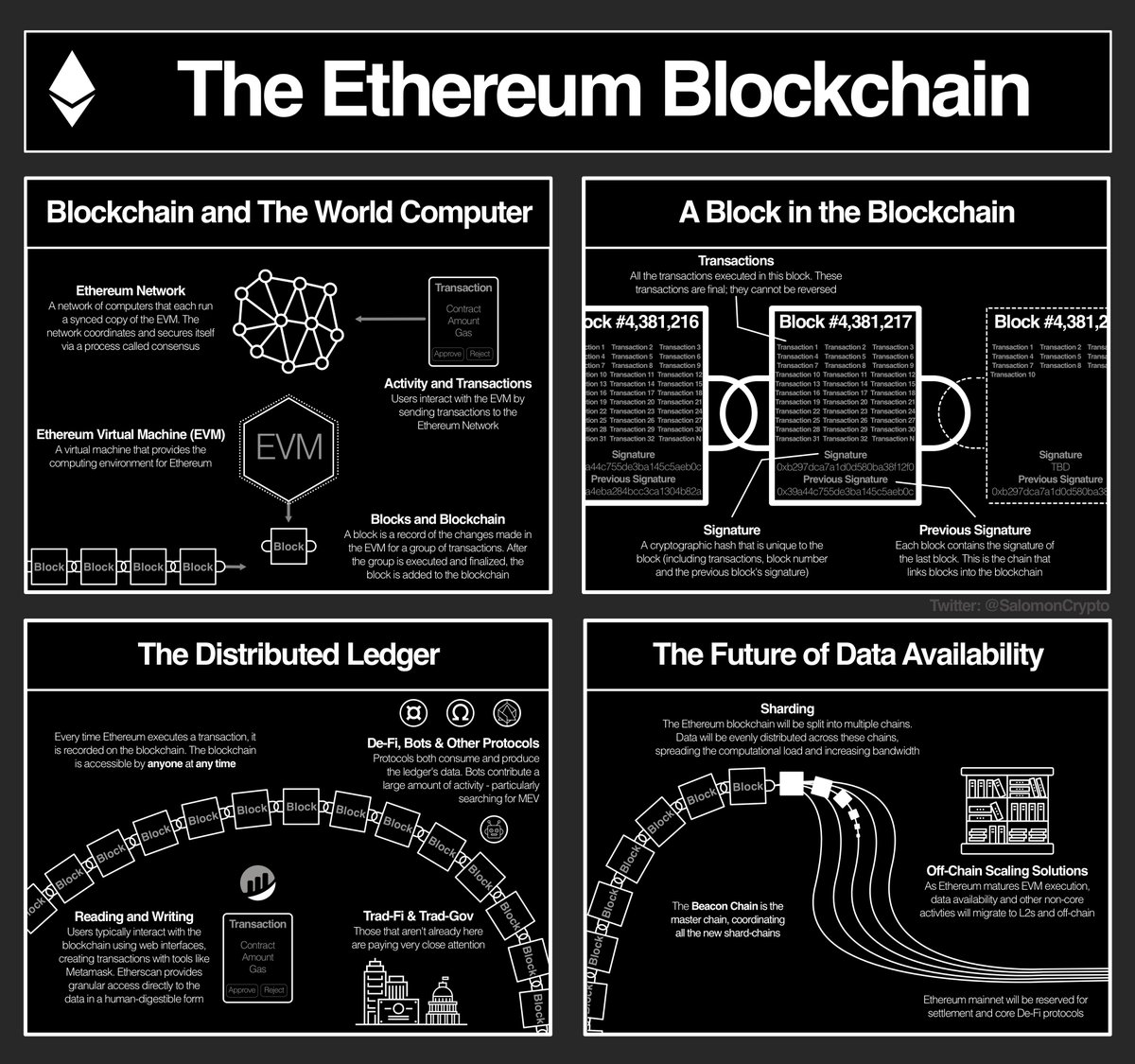
Ethereum Blockchain
The World Computer
Ethereum is the World Computer, a single, globally shared computing platform that exists in the space between a network of 1,000s of computers (nodes).
The nodes provide the hardware, the Ethereum Virtual Machine (EVM) provides the virtual computer and the blockchain records Ethereum's history.
The EVM sits at the center of Ethereum, providing a decentralized computing platform to the world. Everything else is all designed protect and expose the EVM so that anyone who is interested can permissionlessly interact with it.
The Blockchain and the World Computer
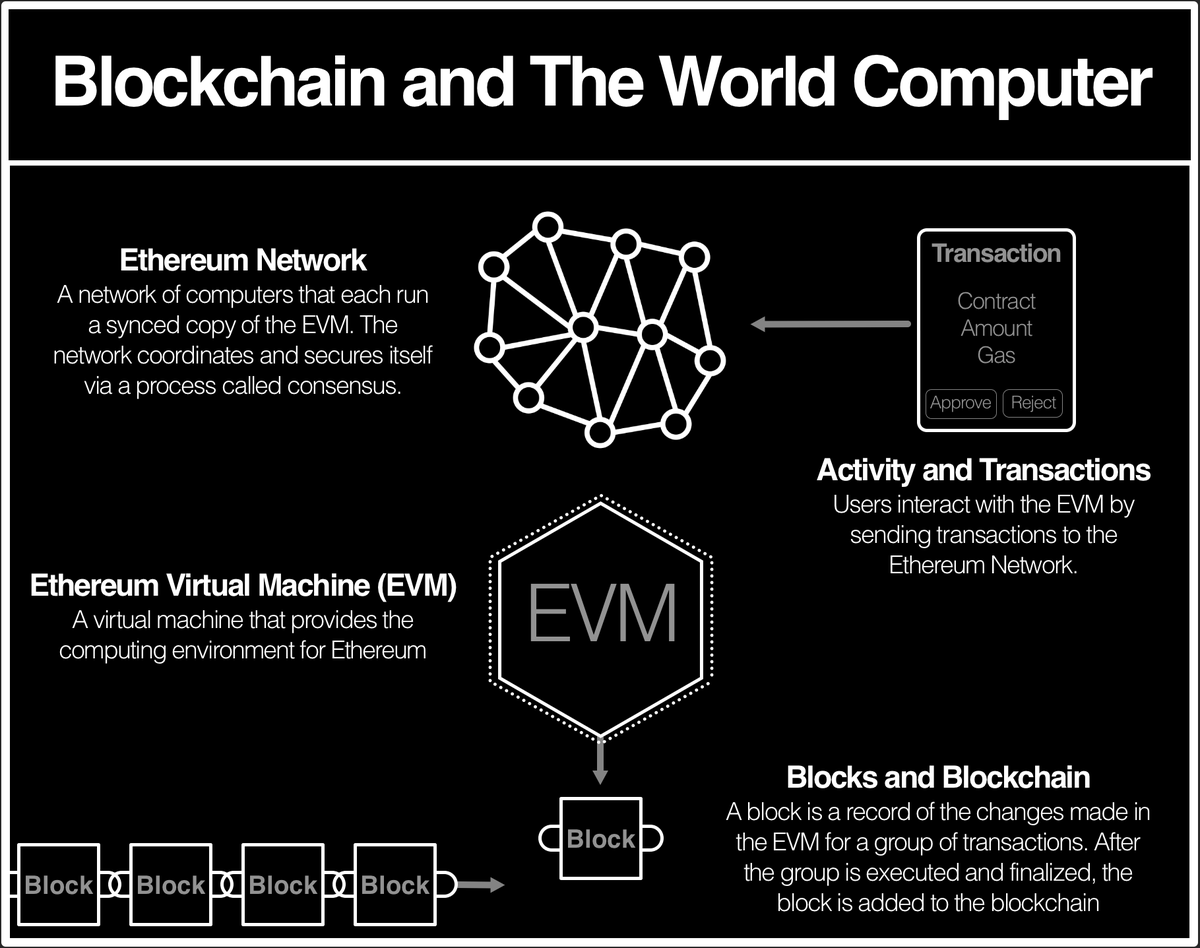
Ethereum is made up of 3 parts:
- the Ethereum Virtual Machine (EVM), which provides the computing environment and executes transactions
- the Ethereum network, which is the group of the real world node operators that coordinate to run Ethereum
- the Ethereum blockchain
A Block in the Blockchain
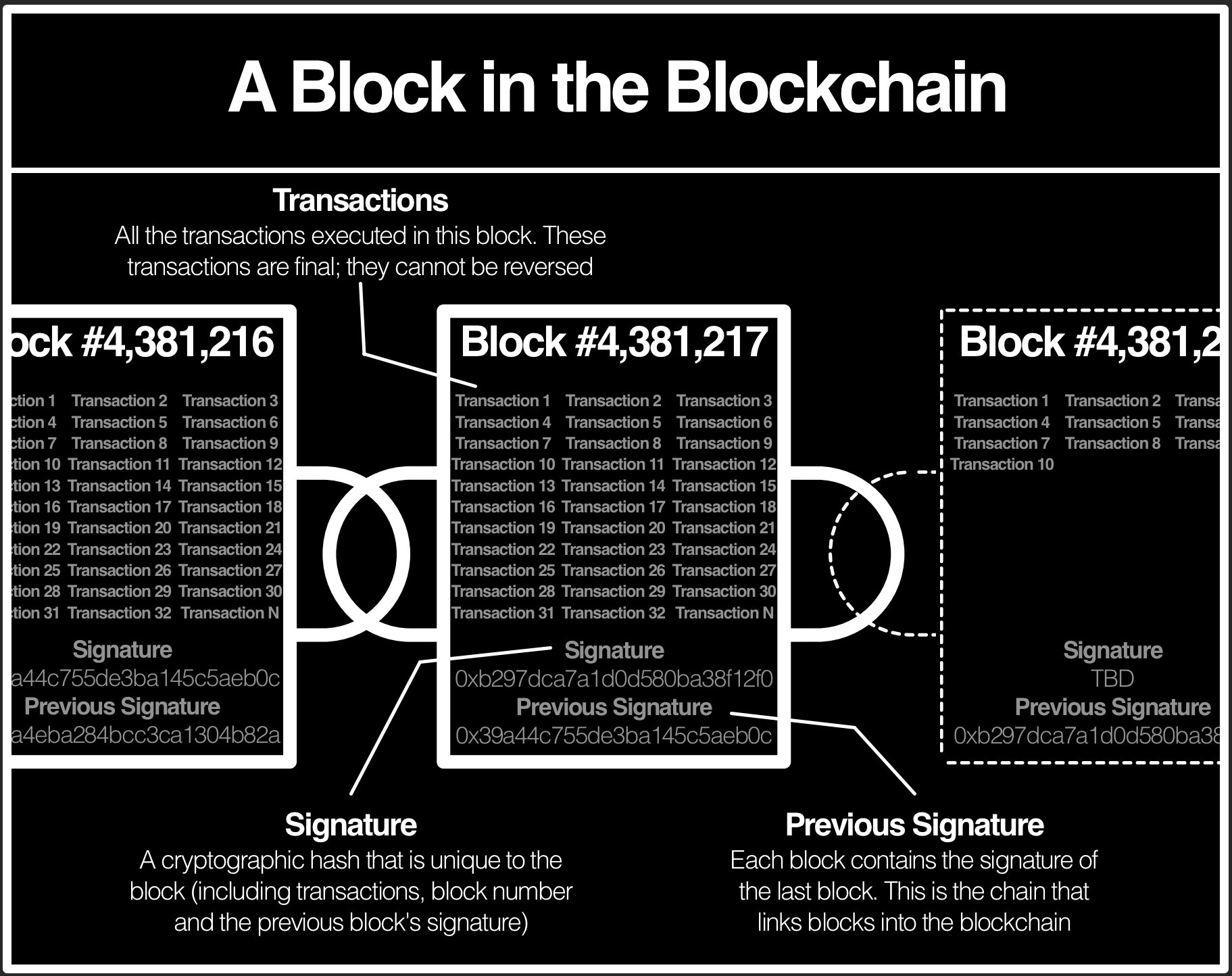
A block is made up of 3 key components:
- A record of the transactions executed at the time the block was created
- A signature, unique to each specific block
- A reference to the previous block's signature
While much more nuanced in practice, you can think of Ethereum operating in turns. Transactions are bundled, ordered and executed all at once.
Each bundle/block represents a turn, linked together by cryptographic proofs.
The Distributed Ledger
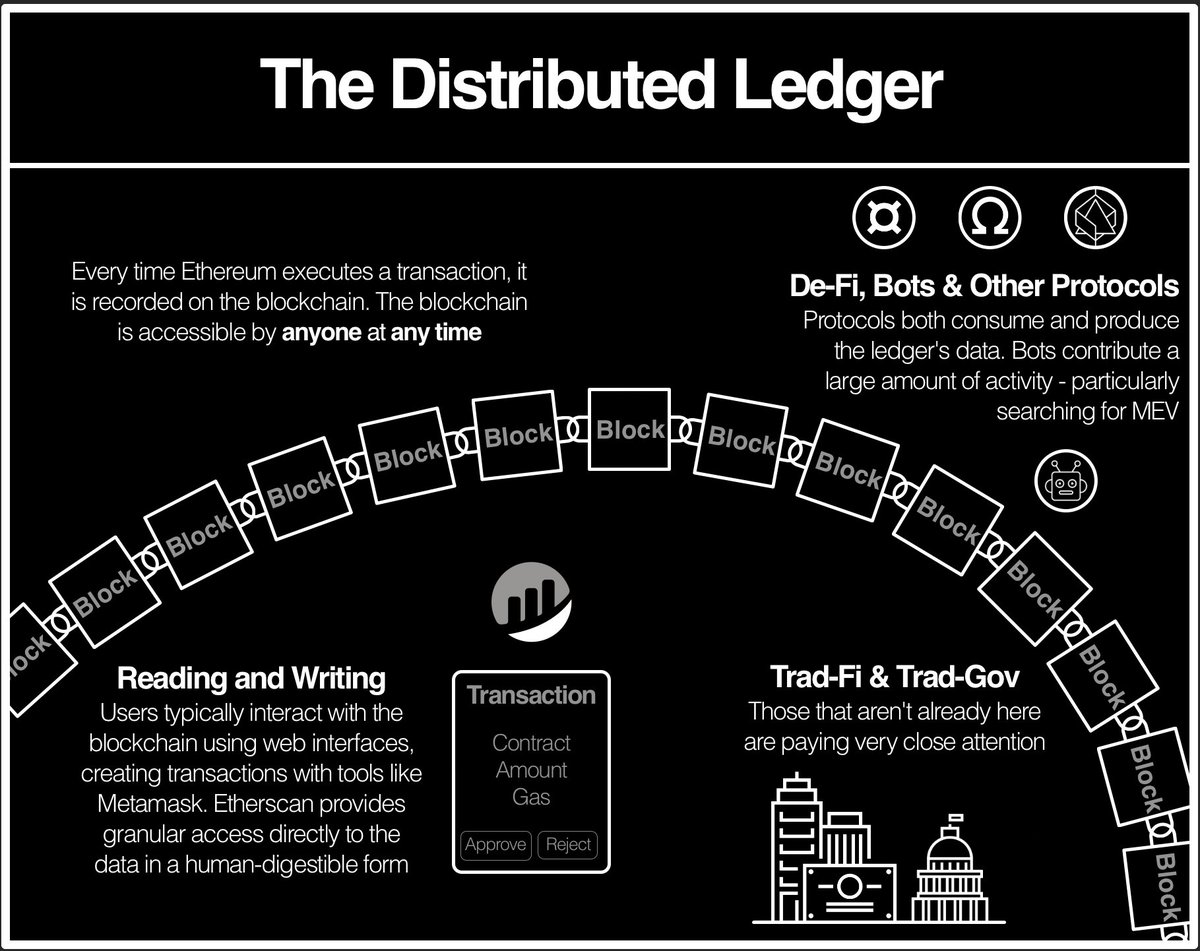
The blockchain, a list of blocks/bundles of transactions, is simply a shared database, a public ledger. Ethereum is not only open-source, it is open-receipt.
By its very nature, web3 is radically transparent.
For better or for worse.
Back in July, said that he will have considered Ethereum ~55% done after The Merge is complete.
What does the future of the Ethereum blockchain look like?
The Future of Data Availability
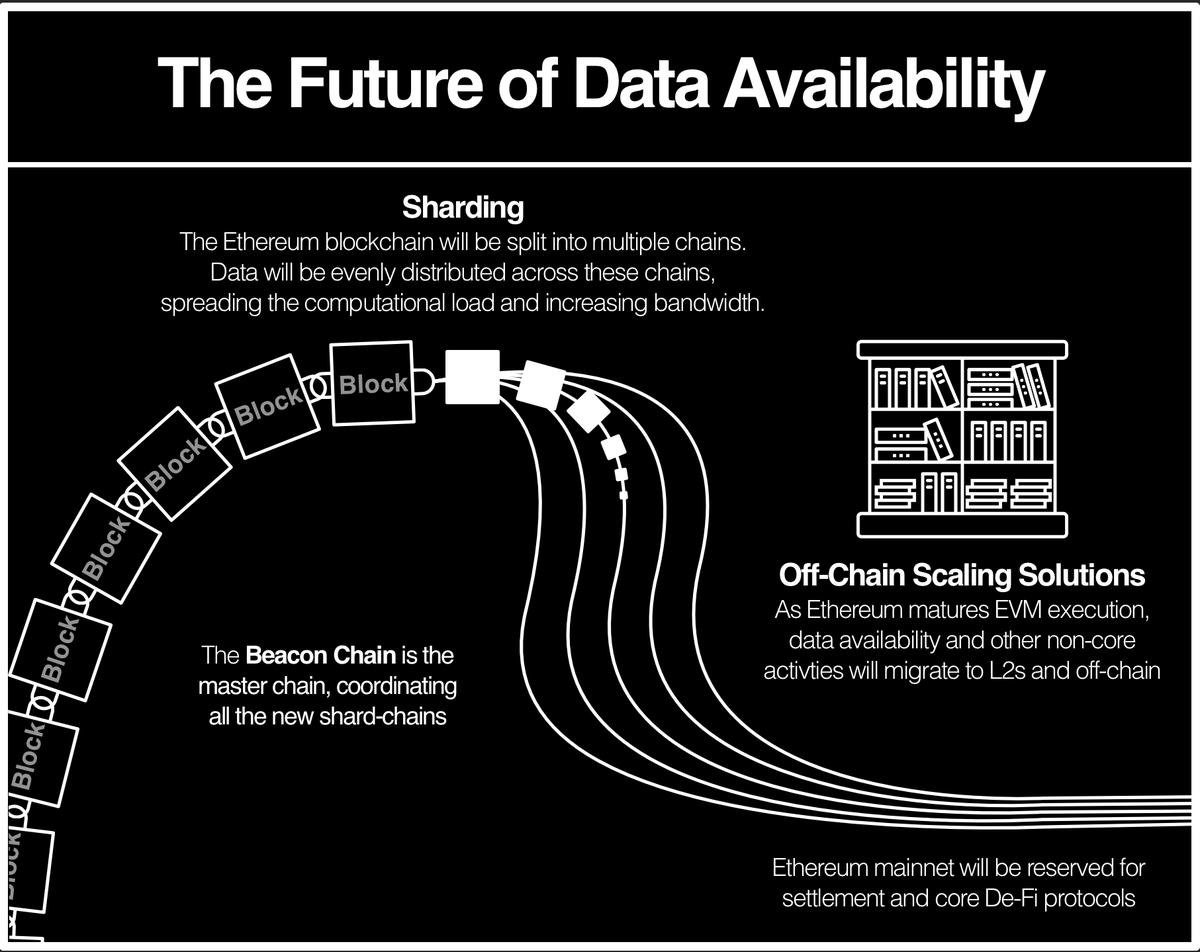
The Ethereum blockchain will see two major categories of upgrades:
- distributed database technology, applying concepts like sharding and history expiry
- non-settlement offloading, moving execution and data availability off-chain
The Global Settlement Layer
Deep Dive: Internet Native Settlement
Long term, Ethereum mainnet will become the global settlement layer of global finance and the (rapidly) growing internet economy.
Property rights will derive from Ethereum while a host of new web3 technologies provide lightning fast execution with negligible gas fees.
Ethereum will provide the foundational technology, upon which the builders will come.
Internet-native property rights are the table stakes.
Open collaboration and positive sum thinking are the house rules.
The jackpot?
A better system, built for 100 generations.
Resources
Source Material - Twitter Link